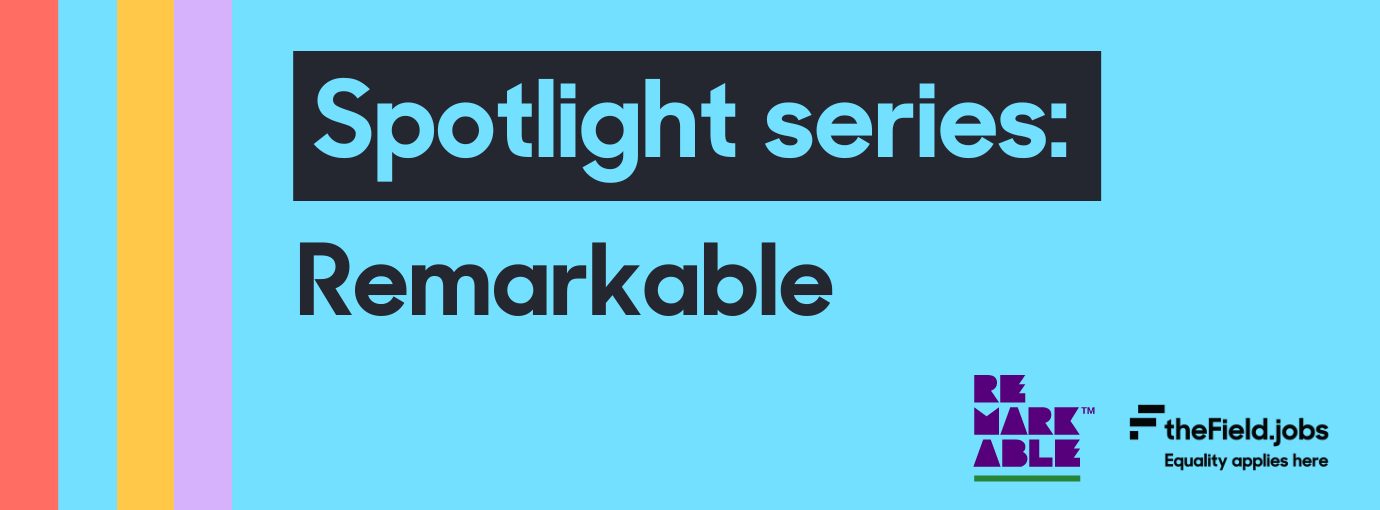There are a number of different ways to approach language when it comes to discussing disability. Two of the key ways are through the use of person-first or identity-first language. At the Field, we prioritise the use of Person-first language, to position the person first, rather than their disability. However, we also know that there are many people in the disability community who prefer to use the equally valid Identity-first structure.
One of the great things about the Field is that it is created for people with disability by people with disability, including when it comes to creating our content. While for the most part, you will find the Field content uses Person-first language, there will be times when our contributors use Identity-first language as their preference. So we wanted to outline the differences in structure, and get some opinions from a few people with disability about what style they prefer to use and why.
What’s the difference between Person-first and Identity-first language?
Before we can recognise and appreciate people’s preferences, it’s important to understand the differences between Identity-first and Person-first language.
According to the Inclusive Victoria: state disability plan (2022-2026), Person-first language “puts the person before their disability”, for example “person with disability”. Identity-first language “puts a person’s disability identity before the person”, for example “disabled person”.
Person-first language “was first used to emphasise a person’s right to an identity beyond their disability as a way of addressing ableism”. It is based on the idea that someone is not purely defined by their disability. It recognises that disability is a part of who someone is, but not the whole of who they are, and works to counter the dehumanisation of the disability community. When we use language such as “person with disability” or describe someone as “having disability”, these are examples of Person-first language.
Identity-first language is often used to “show connection to the disability community, demonstrate disability pride, and emphasise that it is society that is disabling”. It is often used by people who feel that their disability is a key aspect of their identity, and as a point about the disabling environments in which they live and work. When you notice someone describing themselves as a “disabled person”, this is an example of Identity-first language.

What do some of our community with disability think?
Many of the Field team and our broader community are people with disability, all of whom have their own preferences when it comes to disability language. So, we asked a few of them which language type they prefer and why.
Amy Evans – Content Creator
“I prefer person-first language because while I see my disability as being a part of me, I don’t see it as being all of me. I believe that person-first language recognises my disability, but doesn’t define me by it, or put me in the “disability box”. It is just like how you would refer to me as someone with brown hair. However, I think it’s interesting to note that I feel that I see myself as being much more than just my disability because I naturally mix in circles that aren’t heavily disability-based (in the way that I have way more friends without disabilities than with) and therefore, I’m just seen as “Amy” rather than as a disabled person.”
Rebecca Evans – Athlete and Advocate
“I prefer identity-first language as my disability identity is something I am proud to hold. It is not an identity I want to try to separate myself from, which is something person-language attempts to achieve. Also who doesn’t like saving a few words when speaking! It’s much easier to say ‘I’m a disabled person’ compared to ‘I’m a person with a disability’. I have nothing against person-first language, but identity-first language is more representative of how I see myself as a person, and that is with disability as one of my many identities. I wouldn’t say ‘I’m a person who is an athlete”, I say “I’m an athlete”. The same goes for disability.”
Rhys Baxter – Customer Support Specialist
“I never realised the importance of language when talking about disability growing up, until I became a full time wheelchair user at the age of 19, due to a spinal cord injury. Being labeled as a “disabled person”, a word always associated with terms like “tragedy”, “pity”, or “misfortune”, made it very hard to see any hope or future in my situation. Over time I realised that my disability does not define who I am as a person, quite the opposite in fact. The strengths and values I’ve gained from living with disability have only added to my worth as a person, which is why I prefer person-first language and proudly identify as a “person with disability”.”
Zoe Simmons – Journalist, Writer, Speaker and Advocate
“I don’t like using person-first language, because to me it says that we should distance ourselves from disability—which is something we can’t do, and something I don’t want to do. Identity-first language is a lot better in my opinion, because calling someone a “disabled person” isn’t offensive: it’s a fact. Disability is not a dirty word. When language asserts that we should distance ourselves from our disabilities, I can’t help but feel like that gives disabilities negative connotations, and contributes to stigma: especially when it’s non-disabled people telling us how we should speak about ourselves. While I respect anyone’s choice to use whatever language makes them feel most comfortable, I feel like identity-first language allows us to feel more empowered by our disabled identities. I am disabled and proud.”
Cobie Moore – Test Analyst
“My perspective is that language is very context based. In general people use different words and phrases when they are at work, with family or with friends and I feel language related to disability is the same. In a formal setting or in the media, the importance of person-first language is more significant as words have more weight. Using disrespectful language can reinforce negative stereotypes while using person-first language can uplift and empower people with disability. Whereas in a social setting I feel language can be more flexible, obviously there are certain words that should always be avoided but I hope my friends and family feel relaxed and don’t get caught up worrying they might say something wrong. I think the most important thing in social situations is to be respectful of people’s individual language preferences, take notice of the way people refer to themselves and let them take the lead.”
At the end of the day, there is no right or wrong way for someone to describe their disability. It simply comes down to personal preference. If you’re unsure about which language to use when referring to someone, the best thing to do is to take note of how they describe themselves. As with most things disability related, if in doubt, ask.
At the Field, we want everyone to feel included and represented in our content. While our default is Person-first language, you may sometimes see our content shift between Person-first and Identity-first language, depending on the preferences of our Content Creators and Contributors.
If you’re not sure where to go next or would like some more support, we have great resources in our blogs , including Why Inclusive Language is Important. If you’re an Employer, you can also find more information in our learning workshops.




